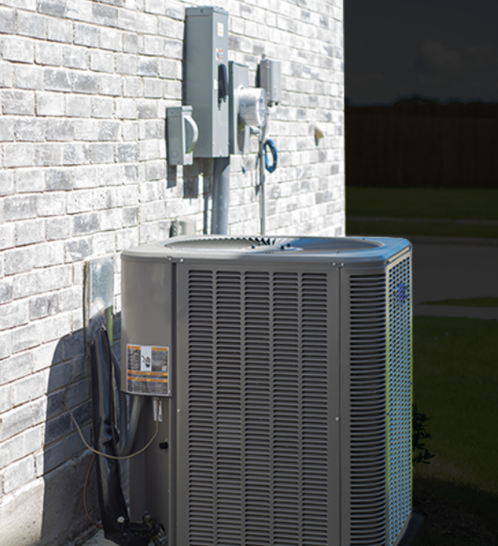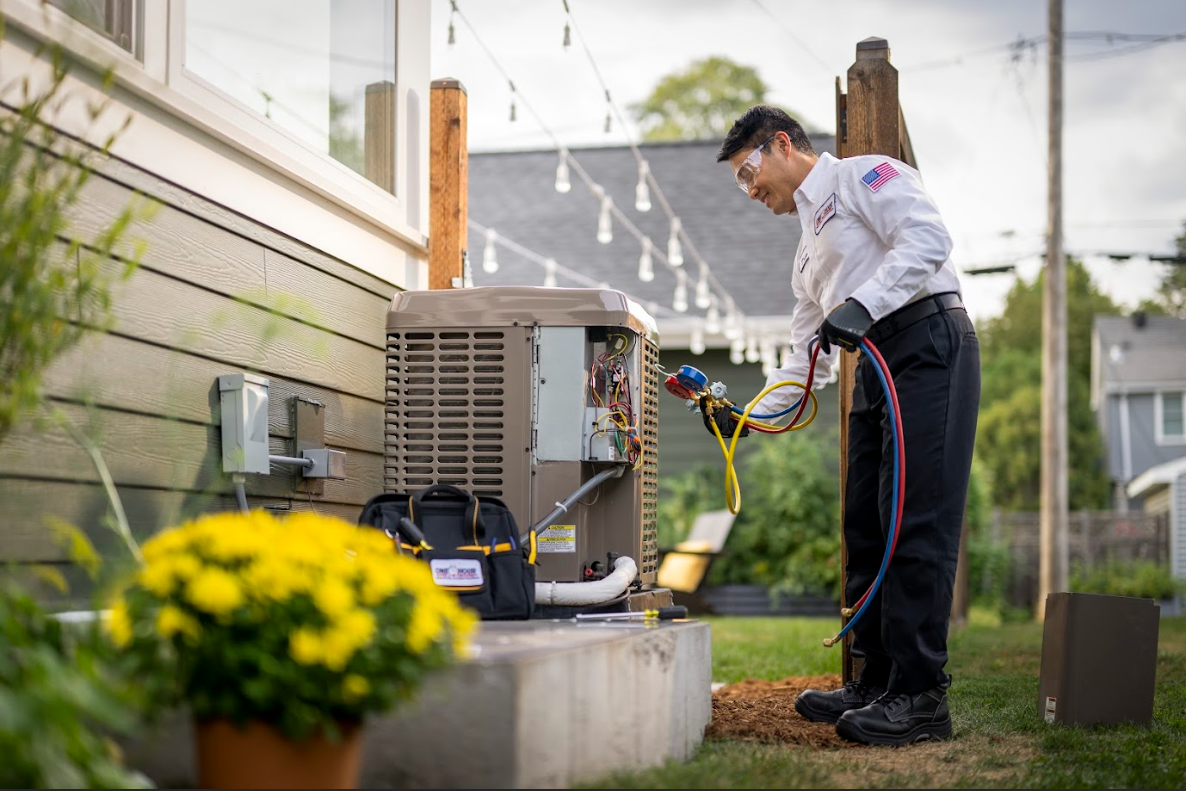What that strange furnace noise might mean
Cold nights in Ogden make a reliable furnace feel priceless. That’s why odd sounds from the heater put homeowners on edge. Noise is the first clue that something inside the system needs attention. Understanding what each sound suggests can help protect the equipment, avoid a no-heat emergency, and keep energy bills in check. For fast, local help with furnace repair Ogden, One Hour Heating & Air Conditioning serves every neighborhood from East Bench and Shadow Valley to Bonneville Hills and West Ogden.
Quick context: what “normal” sounds like
A healthy furnace hums softly. You may hear the inducer fan start, the burner ignite with a brief whoosh, and the blower ramp up to a steady tone. Air moving through vents should sound like a low rush, not a whistle. Anything outside of that pattern deserves attention, especially if it repeats, gets louder, or comes with poor heat or unusual smells.
Rattling or clanking: loose parts, failing bearings, or ductwork issues
Rattling often points to sheet-metal panels or screws that worked loose after cycles of heating and cooling. A sharp clank when the blower starts or stops can indicate a blower wheel set screw backing out or a cracked wheel. If the rattle speeds up with the blower, suspect the motor mount, blower cage, or bearings. In older Ogden homes with long trunk lines, duct oil-canning can mimic a rattle; this happens when thin metal flexes under pressure changes. Insulating or adding support to those runs can quiet them.
If the rattle appears alongside weak airflow, rising utility bills, or a burning smell, shut the system off and schedule furnace repair Ogden UT. A wobbling blower can score the housing and damage the motor quickly.
Banging at startup: delayed ignition
A single loud bang right when heat begins often means delayed ignition. Gas builds up before the burner lights, then ignites at once. Common causes include dirty burners, a weak igniter, low gas pressure, or a sticky gas valve. Delayed ignition is hard on the heat exchanger and can crack it over time. Because a cracked exchanger can leak carbon monoxide, this symptom calls for same-day service.
In Ogden’s dry winters, dust and lint collect fast. Annual cleaning reduces the chance of delayed ignition. If a bang shows up after a long off-cycle or after a filter change, stop and have a licensed tech inspect. Do not try to clean burners without training.

Squealing or screeching: belt or motor trouble
High-pitched squeals usually come from a slipping belt on older belt-driven blowers or from dry motor bearings. Modern direct-drive motors can squeal when their bearings wear or when the blower wheel drags due to debris. If the squeal starts on blower ramp-up and fades, look at belt tension or glazing. If it grows louder over days and airflow drops, shut the system down to prevent motor failure.
Anecdote from field work in North Ogden: a homeowner heard a squeal for two weeks and kept running the furnace. The blower seized on a 12-degree night, tripped the limit switch, and the home went cold at 1 a.m. A simple belt and bearing service earlier would https://www.onehourheatandair.com/ogden have avoided an emergency call.
Grinding or metal-on-metal: shut it off
Grinding is the red alert. It signals failing bearings, a misaligned blower wheel, or a motor nearing the end of life. Continued operation can send metal shavings through the housing, ruin the motor, and throw the wheel out of balance. Cut power at the switch and call for furnace repair Ogden. A technician can check end play, amperage draw, and wheel alignment, then replace or rebuild before collateral damage multiplies costs.
Whistling or whooshing: airflow restrictions and venting
A steady whistle often traces back to the filter. A clogged filter forces air through a smaller area and whistles as it squeezes by. An undersized filter can do the same. If a fresh, high-MERV filter whistles, the system may need a larger filter cabinet or a different media type. Whooshing from one or two vents but not others suggests closed dampers or crushed flex duct.
In some South Weber and Washington Terrace homes, high-efficiency furnaces vent through sidewalls. If wind-driven snow packs those terminations, the inducer can howl or the furnace may shut down. Keep intake and exhaust clear of ice and leaves.

Popping or pinging: thermal expansion in ducts
A light pop in the supply plenum or trunk when the heat starts is usually harmless expansion and contraction. Large temperature swings make sheet metal move. If the sound is loud, frequent, or echoes through the house, the ducts may be undersized, poorly supported, or missing expansion joints. Simple fixes include adding takeoff dampers, insulating cold runs in unconditioned basements, and adjusting blower speed to soften pressure changes.
Clicking: relay, flame sensor, or ignition issues
A few clicks are normal during startup and shutdown as relays close and open. Repeated clicking without ignition points to a dirty flame sensor, a weak igniter, or a faulty pressure switch. Rapid clicking with furnace short-cycling wastes gas and strains parts. If the thermostat is battery-powered, check batteries first; low voltage can cause chatter. If batteries are good and the clicking continues, the control board or safety chain needs diagnosis.
Rumbling after shutdown: burner or draft problems
A low rumble after the burners turn off can mean incomplete combustion or residual flame. Causes include dirty burners, wrong manifold pressure, or a compromised heat exchanger. On oil furnaces it can indicate after-drip, but most Ogden homes use gas. In either case, a combustion analysis is smart. Technicians use readings like O2, CO, and flue temperature to tune the system safely.
Buzzing or humming: electrical components under stress
A new, loud hum may come from a failing transformer, contactor, or capacitor. If the blower struggles to start and then catches, the run capacitor could be weak. Long-term humming paired with flickering lights may indicate poor connections or a shared circuit near capacity. Electrical issues escalate quickly; prompt service prevents board failures that cost far more than a capacitor.
Booming from ducts: pressure and imbalance
A boom that seems to come from the duct system rather than the furnace can happen when supply pressure spikes against closed registers. Homeowners sometimes shut many room vents to “force” heat elsewhere. That can raise static pressure above design levels, stress the blower, and cause noisy transitions. Keep at least 80 percent of registers open and consider balancing dampers in the basement rather than closing supplies in the living space.
When sound links to smell or performance
Treat combinations seriously. Noise plus CO detector alerts, soot around the burner door, a persistent gas smell, or signs of overheating such as a burnt electrical odor call for immediate shutdown and service. If heat output drops, cycles shorten, or the furnace trips a limit, the system is protecting itself. Do not reset it repeatedly.
A simple, safe homeowner checklist
- Replace the filter if it is dirty or overdue.
- Open supply and return vents throughout the house.
- Check the outdoor intake and exhaust for snow, ice, or debris.
- Note where the noise comes from and when it happens in the cycle.
- If there is a burning or gas smell, shut off the furnace and call right away.
Why Ogden furnaces speak up in winter
Wasatch Front winters are dry and dusty, so filters load faster. Nighttime temperature swings make duct metal move more. Older homes near downtown Ogden often have retrofit ductwork with tight turns and transitions that raise static pressure and noise. Newer high-efficiency units in South Ogden subdivisions vent through sidewalls exposed to canyon winds. Local conditions matter, and a tech who works in Ogden daily recognizes these patterns and fixes the root cause.
What a professional will check during furnace noise diagnosis
A thorough visit typically includes a visual inspection of the blower assembly, motor mounts, belt or direct-drive coupling, and housing; burner cleaning and ignition check; measurement of static pressure and temperature rise across the heat exchanger; duct connections, support, and insulation; combustion analysis for gas furnaces; and electrical tests on capacitors, relays, and the control board. The goal is to link the exact noise timing to a mechanical or airflow condition and confirm it with readings, not guesswork.
Repair now or wait: the trade-offs
Waiting might feel easy if heat still flows, but noise often precedes failure. A loose blower wheel that costs little to tighten can, if ignored, chew into the housing and motor, turning a small repair into a replacement. A delayed-ignition bang that cracks a heat exchanger can force a furnace change-out in the middle of a cold snap. Prompt service reduces the chance of an after-hours breakdown, which can add emergency rates and space-heater stress to the family routine.
Prevent future noises with small habits
Change filters based on actual conditions, not a fixed calendar. In Ogden, many homes need a change every 30 to 60 days in winter, especially with pets. Keep returns clear of furniture. During fall tune-ups, ask for a static pressure reading and a blower amp draw; both numbers reveal early strain. If a remodel added supply branches or closed off returns, a quick duct balance can quiet the system and improve comfort from the Highlands to Roy.
Ready for fast, local furnace repair Ogden?
Strange sounds rarely fix themselves. One Hour Heating & Air Conditioning helps homeowners across Ogden, UT diagnose and repair noisy furnaces the same day in most cases. The team arrives with common parts, checks safety first, and explains options clearly before any work begins. For friendly, on-time furnace repair Ogden UT homeowners can count on, schedule online or call today. A quieter, warmer house is a visit away.
One Hour Heating & Air Conditioning provides trusted furnace repair in Ogden, UT and full-service HVAC solutions for homes and businesses. Family-owned and operated by Matt and Sarah McFarland, our company is built on honesty, hard work, and quality service—values passed down from Matt’s experience on McFarland Family Farms, known across Utah for its sweet corn. As part of a national network founded in 2002, we bring reliable heating and cooling care backed by professional training and local dedication.
Our licensed technicians handle furnace and AC installation, repair, and maintenance, heat pumps, ductless mini-splits, thermostat upgrades, air purification, indoor air quality testing, humidifiers, dehumidifiers, duct cleaning, zoning systems, and energy-efficient replacements. We stand by a 100% satisfaction guarantee through the UWIN® program and provide honest recommendations to help Ogden homeowners stay comfortable year-round.
Call today for dependable service that combines national standards with a personal, local touch.
One Hour Heating & Air Conditioning
1501 W 2650 S #103 Phone: (801) 405-9435 Website: https://www.onehourheatandair.com/ogden
Ogden,
UT
84401,
USA